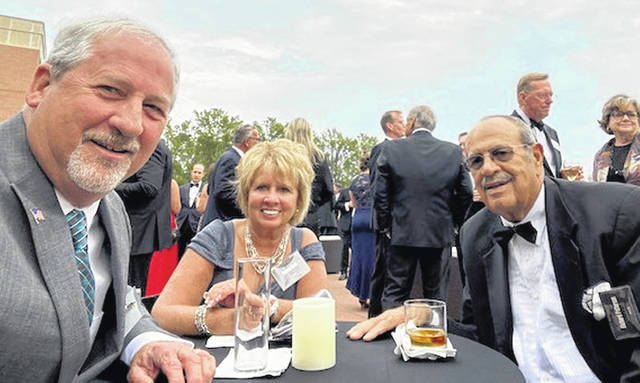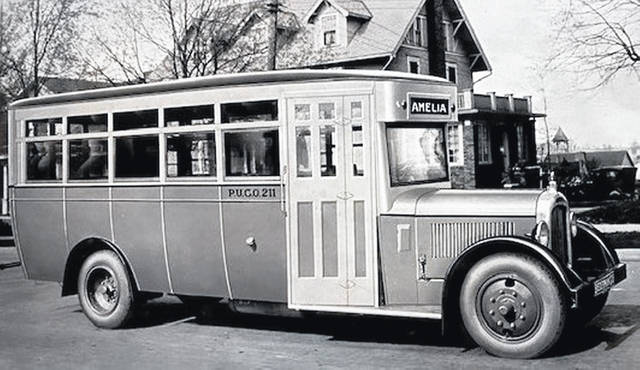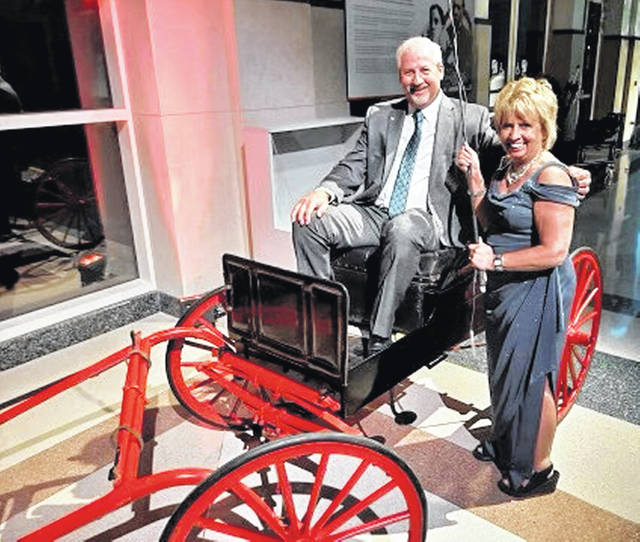


Two men from Greenfield — Charles Richard Patterson and Frederick Patterson — who are regarded as the first and only Black automobile manufacturers ever in North America, were recently inducted into the Automotive Hall of Fame in Detroit, Michigan.
Greenfield resident Tom Smith, an auto dealer who owns several pieces of Patterson memorabilia, attended the ceremony with his wife in place of the Greenfield Historical Society’s Harold Schmidt, who was not able to attend.
Other inductees included Mong-Koo Chung, honorary chairman of Hyundai Motor Group; Thomas Gallagher, former CEO of Genuine Parts Company; Jay Leno, for automotive heritage leadership through his Jay Leno’s Garage series on CNBC; Helene Rother, one of the first women to sustain a career in automotive design (interiors) for General Motors, Nash Motors, and others; and Charlie Wiggins, a barrier-breaking motorsports racer and engineer.
“You know, it was well past due and I’m surprised it wasn’t done many years ago,” Tom Smith said. “I was proud, and it felt good, to represent Greenfield and Highland County. It was a well-deserved honor for the Pattersons. Frederick Patterson was a good businessman and stood behind his products.”
In 1915, Smith said, Patterson & Sons had around 50 employees, making it the largest manufacturing company owned by Blacks in the United States.
Before the Patterson company made cars, it made buggies. Smith said he owns four buggies, including one he took to the hall of fame ceremony, in addition to other pieces of Patterson memorabilia.
“I was a car nut, and an antique car nut, and something made here in Greenfield, I was really impressed with that. I bought anything I could,” Smith said. “I live, eat and breathe this stuff because I’m a car guy, I guess, and my Dad was, too.”
Following are short bios on Charles and Frederick Patterson prepared by the Automotive Hall of Fame:
Charles Richard “C.R.” Patterson was an American entrepreneur who started the C.R. Patterson & Sons carriage company in 1893 in Greenfield. Patterson & Sons grew to be the first and only black-owned and operated automobile company on the continent.
Patterson’s parents moved from Virginia to Greenfield in the early 1840s. There, C.R.’s father worked as a banker for black people in the area who were not allowed to save their money in “white banks.” C.R. was the oldest of 13 children.
Patterson’s father was a firm believer in the power of education and encouraged his children to absorb as much as they could. The local preacher in Greenfield was an abolitionist who preached equal rights and opportunities for black Americans. Patterson was also influenced by the American abolitionist and social reformer Frederick Douglass. He named his oldest son in honor of Douglass.
In 1873, Patterson partnered up with local businessman, J.P. Lowe, to run a carriage design firm in Greenfield. In 1893, Patterson purchased Lowe’s share of the company and renamed it C.R. Patterson & Sons, which he intended to be inherited by his youngest son Samuel, who unfortunately passed away at age 23. C.R.’s oldest son, Frederick, who was college educated, left his teaching position in Louisville, Kentucky to help his father run the company. Frederick took the reins of the company in 1910 after C.R. passed away. By the time he took over, the company had already added automotive repair and service, as he had convinced his father that automobiles were the future.
C.R. Patterson, the son of a banker, was financially savvy, buying and selling real estate in the local area. He died one of the richest people in Greenfield, leaving the company he built to his son, Frederick Douglass Patterson. C.R. Patterson & Sons sold its first automobile in 1915, five years after he passed away.
Frederick Patterson, the son of carriage maker Charles Richard “C.R.” Patterson, took over C.R. Patterson & Sons in 1910 after the passing of his father and brought the company’s first automobile to market in 1915.
Frederick Patterson was born in Greenfield in 1871. His father, C.R., was a big proponent of education and Patterson was encouraged to attend the local high school, even though he already had a job at his father’s company. At first, the school denied admission because he was black, but his father sued and won. Patterson was an outstanding football player and upon graduation from high school, he was recruited to play for The Ohio State University. He was the first black football player in the university’s history.
After leaving college, Patterson married, and after the death of his brother Samuel, left his teaching position in Louisville, Kentucky to join his father’s business. He quickly convinced his father that automobiles were the future. Their next step was to add automotive repair and service to their carriage-building business.
Frederick placed his first ad for auto repair services in the local paper in 1913. As the company built its repair and restoration customer base for the newly-invented “horseless carriages,” his workers gained valuable hands-on experience with the new technology. The company moved on to service engines, drive trains, electrical and mechanical systems as well.
Greenfield was a well-known stop on the Underground Railroad. The Rev. Samuel Crothers and other prominent local Presbyterian ministers were established abolitionists and preached that one should judge a man by the measure of his skills. Likely influenced by these men, Patterson employed mostly white men to work in his factory, a unique concept for a black-owned business in the early 1900s. Patterson was one of the wealthiest men in Greenfield, white or black.
Their first automobile, the Patterson-Greenfield, rolled out in 1915 and sold for $850. It was advertised to be of higher quality than the Model T. The vehicles had a 40 horsepower Continental four-cylinder engine and a top speed of 50 miles per hour.
Patterson struggled to break into the sector, which was monopolized by Henry Ford’s mass produced, less-expensive options. Patterson kept at it and designed and deployed his own assembly line technique to increase output. Unable to compete with Ford’s hold on recreational cars, Patterson moved into commercial vehicles, producing buses and transport trucks. He never revealed his face to his customers, often sending a white proxy in his place to avoid customers’ prejudice.
C.R. Patterson & Sons was forced to close its doors in 1939 at the fault of the Great Depression.
Reach Jeff Gilliland at 937-402-2522.




